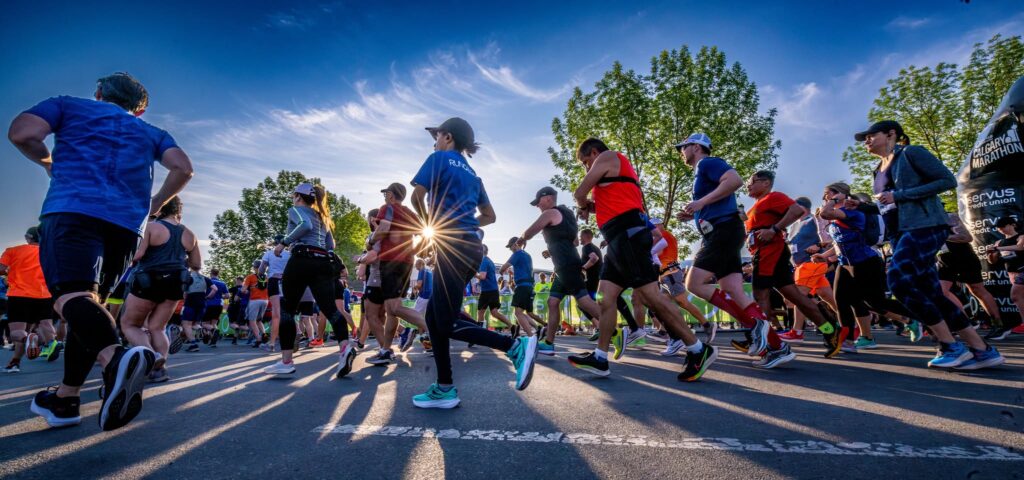A New Era of Running: Kirsten Flemming – Calgary Marathon’s Community Revolution
Posted On May 21, 2025
0
Kirsten Flemming doesn’t sit still for long.
As the Executive Director of Run Calgary, she’s leading more than just a race but reimagining what a marathon can mean to a city. In 2025, that vision takes a bold step forward with a newly expanded week-long celebration of the Calgary Marathon, now entering its 61st year.
“This move has been a few years in the making,” Flemming says. “We hit our capacity with just one day of races. Expanding to two days was a natural next step; that is something many other cities have already done. But we wanted to go even further.”
This year, the weekend splits the action: the 5K and kids’ events on Saturday, with the half and full marathons reserved for Sunday. Not only does this boost capacity, but it also strengthens Calgary Marathon’s mission to make running accessible to everyone, especially families. With over 1,200 children under 12 expected to run, the joy of movement is now a family affair.
But race day is just one part of the experience. As a runner herself, Flemming understands that the magic of a marathon often lies in the days leading up to it.
“When I travel for races, part of the fun is the build-up – the events, the food, the community buzz. We wanted to create that same experience for runners right here in Calgary,” she explains.
To do that, her team partnered with local businesses and YYCRunCrew to curate a vibrant, pre-race menu: shakeout runs, social meetups, community dinners, and pop-up events that celebrate not just sport, but Calgary’s spirit.
This is more than a race – it’s sports tourism, community building, and small business support all rolled into one.

Fresh off the 60th anniversary milestone, Flemming and her team saw a moment of transformation.
“Running is booming,” she says. “New people are coming to the sport, new people are moving to the city, and run crews are fuelling a resurgence. So we asked ourselves: What do we want the next 60 years to look like?”
The answer: a more inclusive, immersive, year-round movement.
That vision is already yielding results. Participation numbers have surged by 23%, breaking the all-time record of 14,750 set back in 2014. In 2025, 17,000 runners will cross the finish line – more than ever before.
“We couldn’t have done it without moving to more than two days,” she notes. “And it took tremendous coordination with the City of Calgary and the Calgary Stampede to make it happen.”
But beyond the numbers are the stories – individual moments that make the marathon more than a race.
Take the Ukrainian United Runners, a Calgary-based crew formed by newcomers who fled the war in Ukraine. Each week, 50 to 70 runners gather at the Peace Bridge to train, connect, and find community. Their presence on the course, dressed proudly in blue and yellow, is a powerful symbol of resilience—and a reminder that Calgary has become home.
Or consider the woman with Down syndrome, training to run the 1.2km kids’ race with her sister by her side. Or Erin, a visually impaired runner returning for his first full marathon, guided by a volunteer from the local running community. Or the visiting American woman living with ALS, who will complete the half marathon on her adult tricycle, marking her first international race.
“These are the stories that fuel us,” Flemming says. “We want this to be a race for everyone. That means making the hard accommodations, not just the easy ones.”
The week’s programming also brings world-class energy to Calgary’s running scene.
“She’s amazing,” Flemming says. “She doesn’t shy away from hard topics like mental health and suicide. She’s a storyteller and a champion, and we’re lucky to have her.”
As race day approaches, the finish line is no longer just a destination. It’s a symbol of transformation – for individuals, for communities, and for Calgary itself.
“We’re not just putting on a race,” Flemming says. “We’re building something bigger – a platform for inclusion, a showcase for local culture, a celebration of humanity in motion.”

